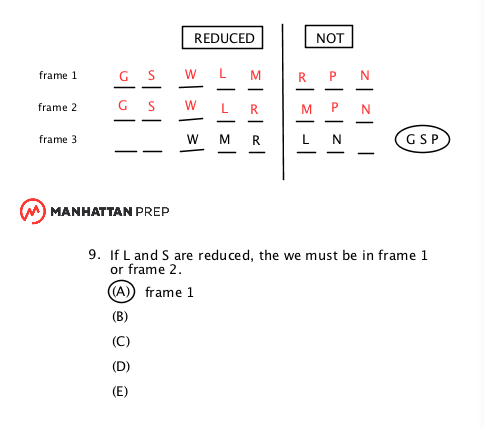LSAT Forum
3 postsPage 1 of 1
-

- linmin_1116
-
Thanks Received: 0
-
Vinny Gambini

- Posts: 1
- Joined: September 15th, 2016
Q9
hi, I can't find a correct answer to respond to Q9. The answer explains that choice(A) is the correct answer with the technique of elimination. howerver, I still think there is no correct answer, the following is my reason: if both L and S are reduced, then P and N are not reduced. Since N can never be together with R according to the rule 2, R is the reduced one. Now we get know that both L and R are reduced, according to the rule 4, M must be not reduced. So we get all the not reduced answers, it is  , N, M. Also, we get know all the reduced answers: L, S, R, G, W. SO, how can the answer be choice (A), which indicates that G and M are reduced?
, N, M. Also, we get know all the reduced answers: L, S, R, G, W. SO, how can the answer be choice (A), which indicates that G and M are reduced?
-

- ManhattanPrepLSAT1
-
Thanks Received: 1909
-
Atticus Finch

- Posts: 2851
- Joined: October 07th, 2009
Re: Q9
linmin_1116 Wrote:Since N can never be together with R according to the rule 2, R is the reduced one.
Here's the wrong turn in the reasoning above. N and R can NOT both be reduced, but they could both be not reduced. So we don't know that R is definitely reduced.
-

- ManhattanPrepLSAT1
-
Thanks Received: 1909
-
Atticus Finch

- Posts: 2851
- Joined: October 07th, 2009
3 posts Page 1 of 1
